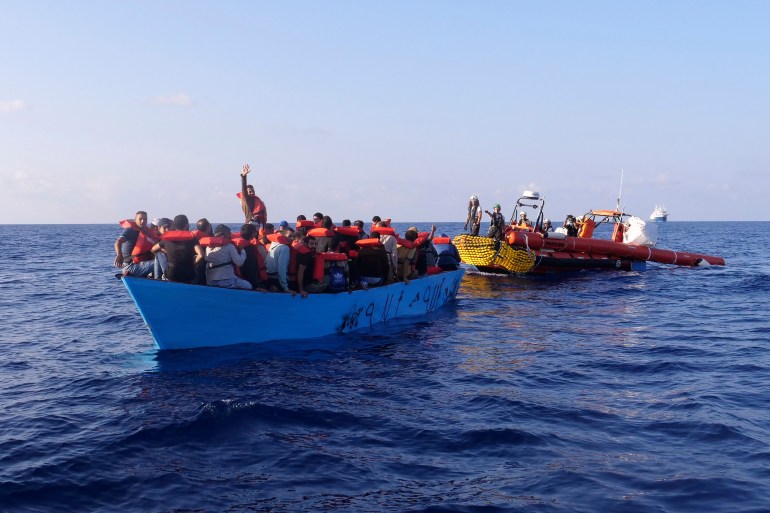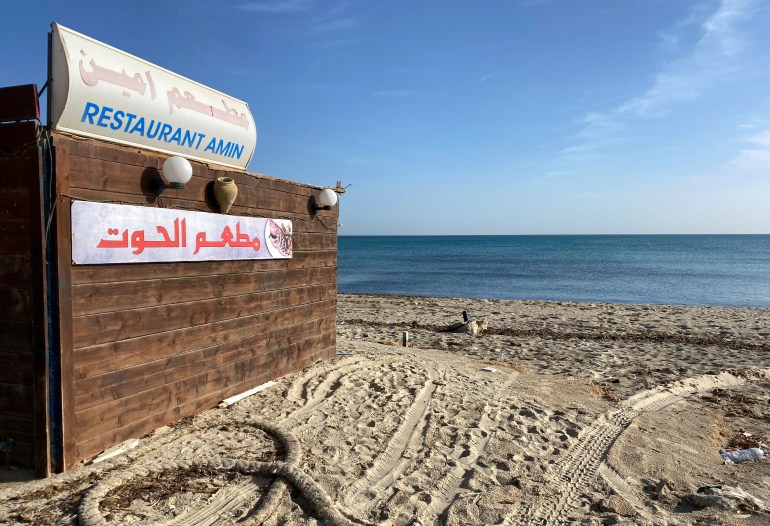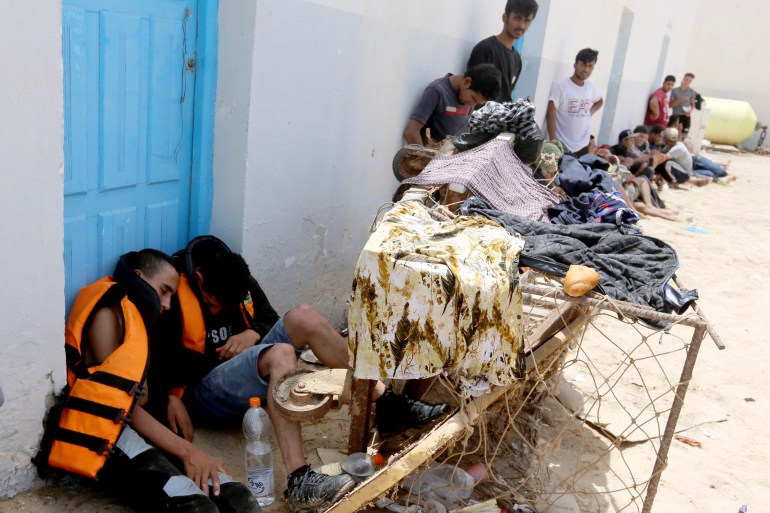ARTICLE AD
Tunis, Tunisia – A boat said to be carrying some 37 migrants and asylum seekers has gone missing off the coast of Sfax in Tunisia.
Relatives described receiving final phone calls at around 2:30pm on January 11, as the boat was setting out to sea. By around 10pm the same night, all contact with the boat and its passengers had been lost.
Other than three or four people from elsewhere in Tunisia, all of the boat’s passengers are reported to be from the small village of El Hencha in the Sfax Governorate. They range in age from about 13 to 35 years old.
Frustrated by the lack of news since the boat’s disappearance, the families of the missing migrants erected roadblocks and burned tyres around the village yesterday, only withdrawing when the government authorities assured the public that search efforts would continue.
Mohammed Jlaiel’s 25-year-old brother Ali is among the missing.
“We haven’t heard anything about him. Nothing! It’s torturous,” Mohammed told Al Jazeera by phone.
“We’re desperate for a piece of news on them,” he continued. ”They were all our neighbours and friends. The whole [of] Hencha is in pain. My mom is in a terrible state.”
 Migrants and asylum seekers attempting to cross the Mediterranean Sea on October 6, 2023, are rescued by a boat from the group Doctors Without Borders [File: Paolo Santalucia/AP Photo]
Migrants and asylum seekers attempting to cross the Mediterranean Sea on October 6, 2023, are rescued by a boat from the group Doctors Without Borders [File: Paolo Santalucia/AP Photo]
The Tunisian National Guard released a statement on Tuesday saying “all field units”, including maritime vessels and helicopters, have been mobilised to find the 37 passengers
Maltese and Italian units were also reported to have been involved in the search.
On Tuesday, the Italian news agency Agenzia Nova indicated that the ongoing search efforts were focused on the coastline between Sfax and the coastal town of Mahdia, some 80 miles (129km) north.
Nevertheless, within Tunisia, politicians and the family members of the missing passengers have voiced disquiet about how long it is taking to receive concrete news.
“Imagine not knowing anything about a brother for six days. They sent planes, boats, all sorts of things to look for them, but there’s no trace of them whatsoever,” Jlaiel said. “Tunisians, Italians, Libyans … Everyone is searching, and yet they can’t find anything. It’s so strange.”
Majdi Karbai, a member of parliament responsible for Tunisians overseas, told Al Jazeera that the missing migrants and asylum seekers were “the latest victims of Europe’s migration policies”.
He criticised the European Union’s efforts to control irregular migration along its southern border as endangering lives.
 The coastal town of Zarzis, Tunisia, is an occasional departure point for boats carrying migrants and asylum seekers [File: Angus McDowall/Reuters]
The coastal town of Zarzis, Tunisia, is an occasional departure point for boats carrying migrants and asylum seekers [File: Angus McDowall/Reuters]
Karbai added that he was in contact with family members in El Hencha. The continued absence of information about the lost boat was troubling to residents there, he explained.
He worried that the situation could trigger unrest, as happened after another vessel sank in 2022.
The southern Tunisian town of Zarzis lost 18 inhabitants in that shipwreck, leading to protests denouncing the speed of the rescue effort and the economic conditions that prompted the fatal voyage. Tunisian President Kais Saied eventually intervened to help quell ill feelings.
“This is bad,” Karbai said of the current situation in El Hencha. “This could be very bad, like Zarzis.”
Poverty and the absence of employment prospects within Tunisia often drive locals to depart for new lives in Europe. Other migrants, however, arrive on Tunisia’s coasts from elsewhere across the globe, particularly from impoverished and conflict-stricken areas of sub-Saharan Africa.
Both Tunisia and neighbouring Libya are key departure points for those looking to travel irregularly by boat to Europe. However, despite its popularity, the migration route is also one of the world’s deadliest.
According to the International Organization for Migration (IOM), 2,498 migrants and asylum seekers are known to have drowned while crossing the central Mediterranean Sea in 2023. The true figure is likely far higher.
In the first 11 months of 2023, Tunisia’s National Guard intercepted almost 70,000 irregular migrants and asylum seekers. Of those, 77.5 percent had travelled to Tunisia from across Africa. The remainder came from Tunisia itself.
 Migrants and asylum seekers rest in the port city of Ben Gardane, Tunisia, after being rescued from the waters of the Mediterranean by the Tunisian navy on July 7, 2021 [File: Hamadi Sehli/AP Photo]
Migrants and asylum seekers rest in the port city of Ben Gardane, Tunisia, after being rescued from the waters of the Mediterranean by the Tunisian navy on July 7, 2021 [File: Hamadi Sehli/AP Photo]
Ali Jlaiel from El Hencha was as typical a passenger as any. His brother Mohammed described the missing 25-year-old as someone who struggled to settle down after a series of low-wage jobs, none lasting any great length of time.
“He felt cornered,” Mohammed Jlaiel said. “He had no hope of a good future.”
Ali’s last job was as an overnight security guard at the Mall of Sfax. But even with a steady wage, his budget barely covered his expenses, Mohammed explained.
“He got 600 dinars [$193] as a salary [a month]. Ten dinars [$3] would be spent on daily transportation from Hencha to Sfax. Add to that the cost of his cigarettes and coffee. Nothing would be left. It’s depressing.”
“There’s nothing in Hencha. And he’s not a special case. The boat was full of our neighbours. Even kids as young as 13 and 14,” he said. “They all didn’t find any chance here.”

 1 year ago
118
1 year ago
118 